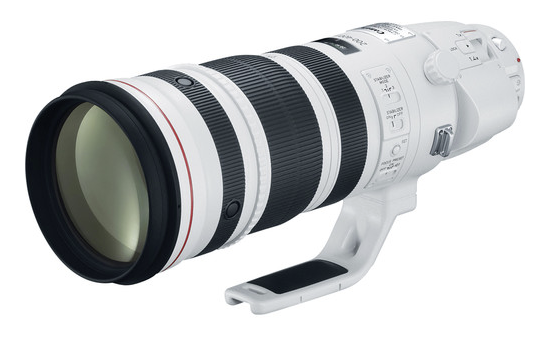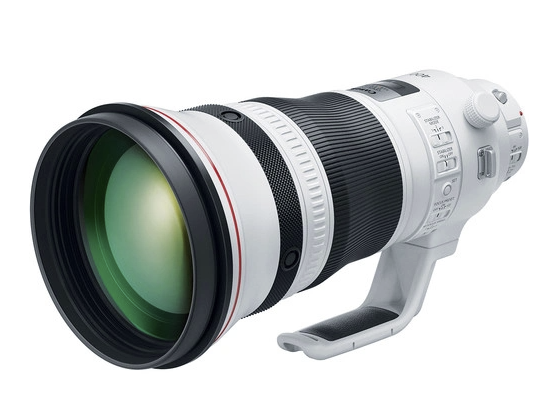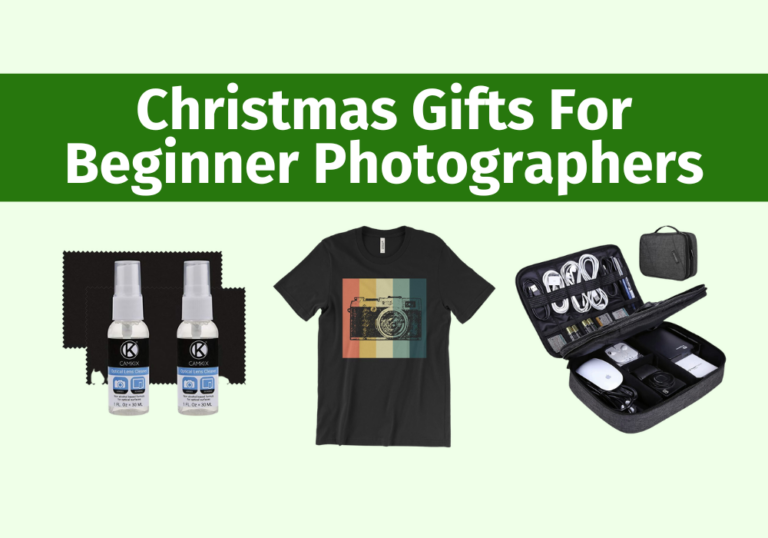Best Lenses For Wildlife Photography
We often get asked our recommendations for the best lenses for wildlife photography.
If you’re looking for a good lens to add to your travel photography gear to photograph wildlife, it’s important to know and understand the features you’ll need in order to make the best comparisons.

You’ll find good wildlife photography lenses in all price ranges to suit any budget. Keep in mind the biggest expense for wildlife photography will be the lens. You could have the best camera, but a poor quality lens could produce soft images that aren’t as sharp as you hoped.
So what’s the best lens for wildlife photography? Check out all the lenses for wildlife photography we recommend that fit all budgets.
This site contains affiliate links which means WE may receive commissions for purchases made through these links. We only provide links to products we actually use and/or wholeheartedly recommend! As an Amazon Associate, we earn from qualifying purchases. Read the full Disclosure Policy.
Wildlife Photography Gear
- Best cameras for wildlife photography
- Best tripods for wildlife photography
- Best tripod head for wildlife photography
Nikon 500mm f5.6 Lens Review
Looking for an affordable lens for wildlife? Check out our review and why we LOVE the Nikon 500mm f5.6 lens for nature photography!
Features of a Good Wildlife Photography Lens
Zoom lenses for wildlife photography – allow for flexibility, giving you a range of focal lengths you can use. This means you can achieve a variety of compositions for your photo, since you aren’t limited by the fixed focal length of a prime lens. Some zoom lenses implement varying maximum aperture as you zoom in (shooting at 150mm, you can use an f/5 aperture, but shooting at 600mm, you’re limited to f/6.3 and smaller).
Prime lenses for wildlife photography – you’ll find most prime lenses produce sharper images than the zoom lenses. But we recommend you look at comparisons between particular lenses in your budget to see the true differences there. You’ll find some zoom lenses that are sharper than many primes – it really depends what you can afford. Prime lenses tend to be more expensive because they are faster and have a much wider maximum aperture.
Best Lenses for Wildlife Photography
Be sure to find the telephoto lens for your specific camera model: Canon, Nikon, or Sony!
NIKON Lenses for Wildlife Photography
FOR NIKON: This lens from Sigma is a versatile option for Wildlife Photography that is capable of impressive results. The lens is lightweight with a comparatively low cost and delivers a wide range of focal lengths.
Key Features- F-Mount Lens/FX Format
- Aperture Range: f/5 to f/22
- One FLD Element, Three SLD Elements
- Super Multi-Layer Coating
- Hyper Sonic Motor AF System
- OS Image Stabilization
- Removable, Rotating Tripod Collar
- Rounded 9-Blade Diaphragm
FOR NIKON: The Tamron G2 Telephoto Zoom is a great lens for Wildlife Photography with its wide range of focal lengths, long reach, and nice image quality. It is a lightweight and sturdy lens with a comparatively low cost.
Key Features- Aperture Range: f/5 to f/40
- Three Low Dispersion Glass Elements
- eBAND, BBAR, and Fluorine Coatings
- Ultrasonic Silent Drive Autofocus Motor
- VC Image Stabilization
- FLEX ZOOM LOCK, Zoom Lock Switch
- Moisture-Resistant Construction
- Removable Arca-Type Tripod Mount
- Compatible with TAP-in Console
The Nikon 200-500mm Telephoto Zoom lens is a lightweight, low-cost option that delivers consistent performance. It has a sturdy construction and nice image quality.
Key Features- F-Mount Lens/FX Format
- Aperture Range: f/5.6 to f/32
- Three Extra-Low Dispersion Elements
- Super Integrated Coating
- Silent Wave Motor AF System
- Vibration Reduction with Sport Mode
- Electromagnetic Diaphragm Mechanism
- Detachable, Rotatable Tripod Collar
- Rounded 9-Blade Diaphragm
- F-Mount Lens/FX Format
- Aperture Range: f/2.8 to f/22
- Two Fluorite and Two ED Elements
- Nano Crystal & Super Integrated Coatings
- Fluorine-Coated Front Lens Element
- Silent Wave Motor AF System
- Vibration Reduction, Sport/Tripod Modes
- Electromagnetic Diaphragm Mechanism
- Detachable, Rotatable Tripod Collar
- Rounded 9-Blade Diaphragm
This Prime Telephoto 500mm lens from Nikon is a more budget friendly option for high quality images. Due to its smaller maximum aperture, it is not as capable in low light as its f/4 counterpart. The advantages of this lens lie in its lighter, smaller construction and its lower cost. The lens is very well constructed and durable. This is our primary lens for wildlife photography, and we love it for its great image quality and because it is very hiking friendly.
The following list of lenses highlights the matchless work horses that are known for high quality construction, performance, and image quality. For those captivating, professional level images.
Key Features- F-Mount Lens/FX Format
- Aperture Range: f/5.6 to f/32
- One Phase Fresnel Element
- Three Extra-Low Dispersion Elements
- Nano Crystal & Super Integrated Coatings
- Fluorine-Coated Front Lens Element
- Silent Wave Motor AF System
- Vibration Reduction, Sport/Tripod Modes
- Electromagnetic Diaphragm Mechanism
- Detachable, Rotatable Tripod Colla
- F-Mount Lens/FX Format
- Aperture Range: f/4 to f/22
- Two Fluorite and Three ED Elements
- Nano Crystal & Super Integrated Coatings
- Fluorine-Coated Front Lens Element
- Silent Wave Motor AF System
- Vibration Reduction, Sport/Tripod Modes
- Electromagnetic Diaphragm Mechanism
- Detachable, Rotatable Tripod Collar
- Rounded 9-Blade Diaphragm
- F-Mount Lens/FX Format
- Aperture Range: f/4 to f/22
- Two Fluorite and Four ED Elements
- Nano Crystal & Super Integrated Coatings
- Fluorine-Coated Front Lens Element
- Silent Wave Motor AF System
- Vibration Reduction, Sport/Tripod Modes
- Electromagnetic Diaphragm Mechanism
- Detachable, Rotatable Tripod Collar
- Rounded 9-Blade Diaphragm
- F-Mount Lens/FX Format
- Aperture Range: f/5.6 to f/32
- Two Fluorite and Two ED Elements
- Nano Crystal & Super Integrated Coatings
- Silent Wave Motor AF System
- Vibration Reduction, Sport/Tripod Modes
- Electromagnetic Diaphragm Mechanism
- Detachable, Rotatable Tripod Collar
- Rounded 9-Blade Diaphragm
- Includes Dedicated 1.25x Teleconverter
CANON Lenses for Wildlife Photography
FOR CANON: The Tamron G2 Telephoto Zoom is a great lens for Wildlife Photography with its wide range of focal lengths, long reach, and nice image quality. It is a lightweight and sturdy lens with a comparatively low cost.
Key Features- Aperture Range: f/5 to f/40
- Three Low Dispersion Glass Elements
- eBAND, BBAR, and Fluorine Coatings
- Ultrasonic Silent Drive Autofocus Motor
- VC Image Stabilization
- FLEX ZOOM LOCK, Zoom Lock Switch
- Moisture-Resistant Construction
- Removable Arca-Type Tripod Mount
- Compatible with TAP-in Console
FOR CANON: This lens from Sigma is a versatile option for Wildlife Photography that is capable of impressive results. The lens is lightweight with a comparatively low cost and delivers a wide range of focal lengths.
Key Features- F-Mount Lens/FX Format
- Aperture Range: f/5 to f/22
- One FLD Element, Three SLD Elements
- Super Multi-Layer Coating
- Hyper Sonic Motor AF System
- OS Image Stabilization
- Removable, Rotating Tripod Collar
- Rounded 9-Blade Diaphragm
- EF-Mount Lens/Full-Frame Format
- Aperture Range: f/4 to f/32
- Built-In 1.4x Extender
- One Fluorite and Four UD Elements
- Super Spectra Coating
- Ring-Type Ultrasonic Motor AF System
- Optical Image Stabilizer
- Power Focus, Focus Limiter, Focus Preset
- Weather-Sealed Design, Fluorine Coating
- Detachable, Rotatable Tripod Collar
- EF-Mount Lens/Full-Frame Format
- Aperture Range: f/2.8 to f/32
- Super UD and Fluorite Elements
- Super Spectra and Air Sphere Coatings
- Ring-Type Ultrasonic Motor AF System
- Customizable Electronic Focusing Ring
- Optical Image Stabilizer
- Weather-Sealed Design, Fluorine Coating
- Detachable, Rotatable Tripod Collar
- Rounded 9-Blade Diaphragm
- EF-Mount Lens/Full-Frame Format
- Aperture Range: f/4 to f/32
- Two Fluorite & Four Aspherical Elements
- Sub Wavelength Coating
- Ring-Type Ultrasonic Motor AF System
- Optical Image Stabilizer
- Power Focus, Focus Limiter, Focus Preset
- Weather-Sealed Design, Fluorine Coating
- Detachable, Rotatable Tripod Collar
- Rounded 9-Blade Diaphragm
- EF-Mount Lens/Full-Frame Format
- Aperture Range: f/4 to f/32
- Super UD, Fluorite & Aspherical Elements
- Super Spectra and Air Sphere Coatings
- Ring-Type Ultrasonic Motor AF System
- Customizable Electronic Focusing Ring
- Optical Image Stabilizer
- Weather-Sealed Design, Fluorine Coating
- Detachable, Rotatable Tripod Collar
- Rounded 9-Blade Diaphragm
- RF-Mount Lens/Full-Frame Format
- Aperture Range: f/5.6 to f/64
- Fluorite, Super UD, and UD Elements
- Air Sphere and Super Spectra Coatings
- Ring-Type USM AF System
- Optical Image Stabilizer
- Focus Range Limiter, Two Focus Presets
- Customizable Electronic Focus Ring
- Weather-Sealed Design, Fluorine Coating
- Rotating Tripod Collar
SONY Lenses for Wildlife Photography
FOR SONY: This lens from Sigma is a versatile option for Wildlife Photography that is capable of impressive results. The lens is lightweight with a comparatively low cost and delivers a wide range of focal lengths.
Key Features- F-Mount Lens/FX Format
- Aperture Range: f/5 to f/22
- One FLD Element, Three SLD Elements
- Super Multi-Layer Coating
- Hyper Sonic Motor AF System
- OS Image Stabilization
- Removable, Rotating Tripod Collar
- Rounded 9-Blade Diaphragm
Sony’s long range Telephoto Zoom is a lightweight, high-performance lens with great image quality. It is a little more expensive but still lies in the affordable range and a great option for Wildlife Photography.
Key Features- E-Mount Lens/Full-Frame Format
- Aperture Range: f/5.6 to f/36
- Five ED Elements, One Aspherical Element
- Nano AR Coating and Fluorine Coating
- Direct Drive Super Sonic Wave AF Motor
- Optical SteadyShot Image Stabilization
- Dust and Moisture-Resistant Construction
- Removable, Rotating Tripod Collar
- Rounded 11-Blade Diaphragm
If you also enjoy landscape photography in addition to wildlife photography, check out the gear we use and recommend.


























You forgot to mention Canon’s EF 400mm f/4 Do Mark II. A great diffractive optic lens for wildlife.